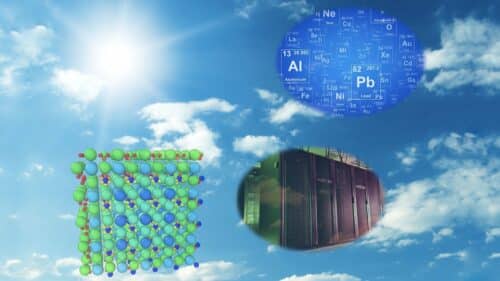A scientist in the U.S. Department of Energy’s (DOE) Argonne National Laboratory developed an algorithm using artificial intelligence for screening materials that can be used as solar absorbers

A team of researchers is using machine learning methods to examine the solar energy properties of a class of material called halide perovskites. This compound is being studied for decades as it exhibits remarkable efficiency in converting sunlight to electricity. They provide the possibility of lower cost and energy input for material preparation and cell building. With the use of AI-based machine learning which integrates large data sets and algorithms to imitate the way that humans learn. It used sample data and experience to produce better predictions.
“According to a recent DOE study, by 2035, solar energy could power 40% of the nation’s electricity,” said Chan. “And it could help with decarbonizing the grid and provide many new jobs”. “Unlike silicon or cadmium telluride, the possible variations of halides combined with perovskites are essentially unlimited,” said Chan. “There is thus an urgent need to develop a method that can narrow the promising candidates to a manageable number. To that end, machine learning is a perfect tool.”
The team utilized data for a few hundred halide perovskite compositions, then applied it to approximately 18,000 compositions as a test case. The findings reduced the number of compositions and resulted in only 400 compositions worthy of study.” Our list of candidates has compounds that have already been studied, compounds that no one has ever studied, and even compounds that were not among the original 18,000,” said Chan. “So we are very excited about that.”
The team is planning to utilize autonomous experimentation to synthesize, characterize and test the best of their few hundred prime candidates. They envision enhancing the current machine learning method. “We are truly in a new era of applying AI and high-performance computing to materials discovery,” said Chan. “Besides solar cells, our design methodology could apply to LEDs and infrared sensors.”
Click here for the Published Research Paper





